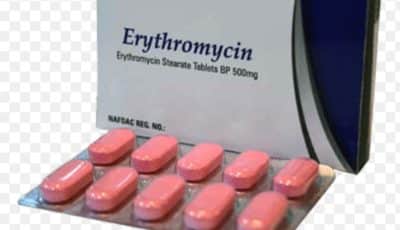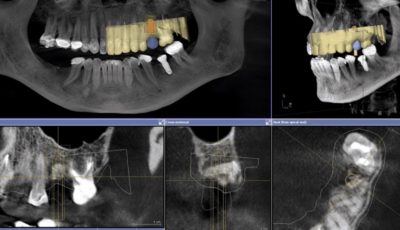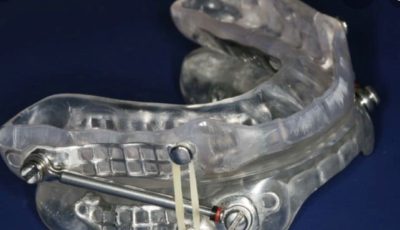ABSTRACT
Orthodontic implants are an excellent alternative to conventional orthodontic anchorage systems such as intraoral dental anchoring units and extra-oral headgear devices. With the advent of prosthetic implants and their predictable results and the increased demand for orthodontic treatment by adult patients and the importance of anchorage control, the orthodontists found an opportunity to use these temporary additional devices for reinforcement of anchorage or for traction. In recent years, orthodontic implants have become very popular for providing temporary skeletal anchorage and have several applications in clinical orthodontics especially for adults with an incomplete dentition as well as to reduce the need for patient compliance and for prosthetic cases. Other Advantages include their relatively small size, which results in minimal anatomical limitations, user-friendly protocol, immediate loading potential, adaptability to biomechanics in effecting orthodontic and orthopedic forces, high success rate, low cost and most importantly patient acceptability. The purpose of this review is to revive orthodontists on the current concepts of orthodontic implants and orthodontic mechanics.
Key Words: Orthodontics implants, Orthodontics anchorage, Orthodontic mechanics, Anchorage control.
INTRODUCTION
Endosseous metallic screws are widely used in orthopedics, maxillofacial surgery and more recently in orthodontics, as these devices provide absolute anchorage. Control of anchorage in orthodontics represents a fundamental problem in the treatment of dental and skeletal dysgnathia. The existing anchorage potential of the natural teeth has to be balanced to the required anchorage task to avoid uncontrolled tooth movements. This may pose a clinical challenge when strict positional stability and maximal anchorage is intended.1 Orthodontic implants are useful to control skeletal anchorage in less compliant patients or in cases where absolute anchorage is necessary. Usually conventional mechanism for orthodontic anchorage control can be either extraoral or intraoral that is headgear or intermaxillary elastics. Their use is combined with various side effects such as tipping of occlusal plane or undesirable movements of teeth. Therefore, the use of endosseous implants for anchorage purposes are increasingly used to achieve positional stability and maximum anchorage. The standard ISO 16443 (Dentistry — Vocabulary of Oral Implantology) specifies terms and definitions for dental implants, instruments and accessories, and the most commonly used clinical terms in the field of dental implantology. According to this standard, the orthodontic implant is a device specially designed to be placed within, through, or upon the bones of the craniofacial complex, the primary purpose of which is to provide anchorage for an orthodontic appliance. The purposes of orthodontic implants and dental implants are different and in contrast to dental implants, OI are loaded immediately. In this standard we do not have the terms or definitions of miniscrew and mini-implant. In the present review we will use the term orthodontic implant (OI). OI have proved to provide reliable anchorage in various clinical situations. Their versatility has made new types of mechanics and treatment options possible. The purpose of this paper is to revise practitioners on the current concepts of orthodontic implants and orthodontic mechanics.
ORTHODONTIC ANCHORAGE
According to Newton’s third Law of motion, for every action there is an equal and opposite reaction. Anchorage in orthodontics refers to resistance to reactionary undesired tooth movements during treatment offered by an anatomic unit which acts as anchor and site of delivery from which an orthodontic force is exerted. Orthodontic anchorage can be classified according to the ratio of anterior retraction to posterior teeth protraction. Mild anchorage refers to slight retraction of anterior teeth while absolute anchorage means that the majority of space closure needs to be achieved by incisors retraction. Moderate anchorage entails a reciprocal management of anterior retraction and posterior protraction. During orthodontic treatments, different techniques can be devised and used to reinforce anchorage. Traditional biomechanical techniques, such as the use of extraoral anchorage by headgear or intraoral, one by bars, palatal/lingual arches or intermaxillary elastics, cannot effectively control anchorage, either due to lack of patient compliance or due to inaccuracies in the support structures. A reduced number of anchor teeth, advanced loss of periodontal attachment or an unfavourable distribution of teeth represent the typical clinical findings to consider skeletal anchorage. In order to improve anchorage, commercially pure titanium dental implants are increasingly used due to osseointegration. Although the absolute anchorage is achieved, limitations are present, such as longer healing time, difficulty of matching sites with implant sizes, the need for invasive surgery, cleaning problems, and, mainly, the difficulty of removing the implant after the orthodontic treatment is completed. Hence, in 1997, Kanomi proposed the use of titanium orthodontic implants with 1.2mm in diameter and 6mm in length for orthodontic anchorage. Although not suitable for skeletal anchorage, these devices were effective for dental anchorage and provided enough stability for orthodontic purposes.
CLASSIFICATION
The orthodontic implants for anchorage can be classified according to:
a head design: button or bracket
b diameter: from 1.2 to 2.0 mm
c length: from 5.0 to 12.0 mm
d body design: tapered or cylindric
e transmucosal profile: from 0.0 to 3.0 mm
f insertion technique: self-tapping or self-drilling
g thread orientation: left or right drilling insertion
h alloy used for fabrication: titanium alloy ASTM grade 5 or stainless steel.
i treated surface or not subjected to surface treatment.
Treated surface of the dental implant increases its roughness and osseointegration. The implant surface roughness governs cell interactions, allowing adhesion, proliferation, and differentiation. Typically, the orthodontic implants are made of titanium alloy ASTM grade 5 (Ti-6Al- 4V) and are not subjected to surface treatment. An adequate implant surface increases the bone-implant contact (BIC) and makes the orthodontic implants most suitable for immediately loading.6 However, the OI surface treatment increases the torque needed for device removal.
CLINICAL PROCEDURE FOR ORTHODONTIC IMPLANT INSERTION
Orthodontic implants are frequently used in cases that require absolute anchorage, depression and/or distalization of molars. Placement of OI must be carefully monitored because the implants are often situated between tooth roots and occasionally close to the maxillary sinuses. The size and design of the orthodontic implants should be compatible with the quantity and quality of bone available at the installation site and depends on the orthodontic mechanics demanded and on how long the orthodontic implant will remain in situ. It is essential that implants are correctly placed to increase the predictability of success. Careful clinical and radiographic assessment before OI placement is therefore a necessity. Computed tomography examination of the dentofacial field improves the success rate and ensures safe placement.
Main steps for OI insertion: (A) determination of the height of the installation site with a probe, taking into account the position of adjacent tooth roots and other anatomical structures such as inferior alveolar nerves, arteries, veins, mental foramen, and nasal cavity. (B) soft tissue anesthesia. (C) pilot drilling with a lance. (D) insertion of OI. The insertion of orthodontic implants can be performed with or without prior drilling, depending on the insertion site and the tip of the orthodontic implant. Prior drilling is necessary in the case of high bone density and large cortical thickness. Commonly, a pilot hole should be drilled before placement of a self-tapping type OI, a self-drilling OI can be inserted into the bone by using a hand screwdriver, without a pilot hole. The orthodontic implant placement procedure is usually performed by the orthodontist with high success rates, since it is a minimally invasive procedure. Normally, the OI is inserted about 2mm from the tooth root. Alves et al. found that, although the OI is meant to provide stable skeletal anchorage, it has some degree of displacement (≤0.78 mm). Regarding OI displacement, it can be differentiated between direct or primary displacement, due to elastic characteristics of the bone and periodontal structures and migration or secondary displacement under loading over the treatment time caused by remodelling processes. According to volumetric tomography evaluations, the safest insertion sites in maxilla are the anterior and apical region. In the palate, midpalate, and a site distant 6 to 9mm from the incisive foramen are suitable for implantation of small length (ranging from 4 to 6mm) orthodontic implants. In the mandible, the safest area is between first and second premolars and the same site between molars. Factors such as the type of desired movement, biomechanics, distance between roots, attached soft tissue, palate bony height, torque, moment, and bone density should be also analyzed when choosing the site of installation. Orthodontic implants may be placed under an angulation between 10˚ and 20˚ and maybe up to 45˚ In maxilla, particularly, a 30˚ to 40˚ angulation to the long axes of adjacent teeth and a 10˚ to 20˚ angulation in the mandible are recommended to avoid dental injuries. Besides, this angle increases the area of bone contact and ensures greater primary stability. Lateral movements should be avoided during installation. Another important factor for the successful installation of the orthodontic implants is the control of the insertion torque. An ideal torque should be large enough to provide sufficient primary stability yet low enough to maintain the vitality of the surrounding tissues responsible for the healing process which results in secondary stability. It is recommended to use a torque wrench attached to a key insertion coupled with a torque limiter. The insertion and removal torques depend on the contact area between the implant surface and the bone, which is directly proportional to the length of insertion and the cube of the radius. Kim et al.12 inserted 32 orthodontic implants in two beagle dogs and analyzed the influence of the use of prior drilling of the alveolus for placement of the OI. He found that devices inserted without prior drilling have higher anchorage and primary stability. Implants with larger diameters and self-tapping can increase the possibility of damage of cortical bone, which can affect bone remodeling, and stability.13 Thus, it is recommended prior to drilling for insertion of self-tapping OI. This drilling is meant only to overcome the cortical thickness, since a true pilot hole extending into the bone the entire length of the implant is not necessary. The stability of orthodontic implants is associated with several factors such as patient age and gender, high success rates1, since it is a minimally invasive procedure. Normally, the OI is inserted about 2mm from the tooth root.8 Alves et al.9 found that, although the OI is meant to provide stable skeletal anchorage, it has some degree of displacement (≤0.78 mm). Regarding OI displacement, it can be differentiated between direct or primary displacement, due to elastic characteristics of the bone and periodontal structures and migration or secondary displacement under loading over the treatment time caused by remodelling processes. According to volumetric tomography evaluations, the safest insertion sites in maxilla are the anterior and apical region. In the palate, midpalate, and a site distant 6 to 9mm from the incisive foramen are suitable for implantation of small length (ranging from 4 to 6mm) orthodontic implants. In the mandible, the safest area is between first and second premolars and the same site between molars. Factors such as the type of desired movement, biomechanics, distance between roots, attached soft tissue, palate bony height, torque, moment, and bone density should be also analyzed when choosing the site of installation.10 Orthodontic implants may be placed under an angulation between 10˚ and 20˚ and maybe up to 45˚ In maxilla, particularly, a 30˚ to 40˚ angulation to the long axes of adjacent teeth and a 10˚ to 20˚ angulation in the mandible are recommended to avoid dental injuries. Besides, this angle increases the area of bone contact and ensures greater primary stability. Lateral movements should be avoided during installation. Another important factor for the successful installation of the orthodontic implants is the control of the insertion torque. An ideal torque should be large enough to provide sufficient primary stability yet low enough to maintain the vitality of the surrounding tissues responsible for the healing process which results in secondary stability.11 It is recommended to use a torque wrench attached to a key insertion coupled with a torque limiter. The insertion and removal torques depend on the contact area between the implant surface and the bone, which is directly proportional to the length of insertion and the cube of the radius. Kim et al.12 inserted 32 orthodontic implants in two beagle dogs and analyzed the influence of the use of prior drilling of the alveolus for placement of the OI. He found that devices inserted without prior drilling have higher anchorage and primary stability. Implants with larger diameters and self-tapping can increase the possibility of damage of cortical bone, which can affect bone remodeling, and stability. Thus, it is recommended prior to drilling for insertion of self-tapping OI. This drilling is meant only to overcome the cortical thickness, since a true pilot hole extending into the bone the entire length of the implant is not necessary.
The stability of orthodontic implants is associated with several factors such as patient age and gender, the density, and thickness of cortical bone, OI threads design, immediate loading, and oral hygiene.
PRIMARY STABILITY
A basic requirement for success of OI is sufficient primary stability (PS). Primary stability or initial stability refers to the mechanical stability in the bone immediately after OI insertion. PS is a function of the implant diameter, the implant length, the number, and design of threads, the cortical thickness, and the cortical bone density. It can be assessed indirectly by the insertion torque. After installation, the initial stability is tested by attempting to move it with a tweezer. PS might not be obtained if the implant placement torque(IPT) is very low, and subsequent stability, which is supported by bone apposition surrounding the screw thread, might not be acquired if the IPT is very high. The OI should not show signs of mobility. The success rate is assessed during the first four months of installation. The primary stability of orthodontic implants should be analyzed in terms of tensile, compressive and shear stress, the intensity of the applied forces, and the deformation of the surrounding structures. Shear stress is the most critical loading of the boneOI interface. After OI insertion, the preload induces compression forces on the thread surface which tend to maintain OI stability. Considering that orthodontic loads are applied perpendicular or angled, the removal resistance is greater than a simply pull-out test. The orthodontic forces are between 17 0.3 and 4.0 N, smaller than the OI tensile strength. Orthodontic implants with large diameter and conical shape can induce excessive compression of the cortical bone with higher insertion torque. This can cause microdamage to the cortical bone in the form of cracks and possible fracture. The accumulation of minor damage can produce local ischemia, bone necrosis, bone remodeling, and premature loss of the OI. Kim et al. found that the orthodontic engine driver is one of the helpful tool for improving the initial stability and success rates of OI than those manually inserted.
COMPLICATIONS AND REMOVAL
The most commonly reported biological, mechanical, or iatrogenic complications of OI in USA, were loss of stability (76%), soft-tissue overgrowth/irritation (69%), and irritation caused by auxiliary springs (67%). The most commonly cited side effect of OI usage was excessive torquing/tipping of teeth. Much less commonly reported side effects were excessive extrusion/intrusion of teeth (7%) and root resorption (7%). Hygiene control is essential to the success of orthodontic implants. It is recommended that the implant site be cleaned with an interdental brush dipped in 0.12% chlorhexidine. The main risk of OI fracture occurs during insertion and is mainly a result of excessive torque. The development of the sense of touch, feeling the resistance to insertion, appropriate selection of the site, the use of digital twist, previous perforation of the cortical areas, attention to pain symptoms, and signs of excessive increase of resistance to the penetration of the OI are essential to prevent fractures. If OI fracture occurs, two procedures can be done: (a) removing the fractured part or (b) keeping the fractured part buried, since it is not necessary to move the tooth in the area. Removal of the OI is done without anesthesia and twisting in the opposite direction to that used in the insertion. Therefore, it is recommended to note the type of orthodontic implant thread used (right or left) to prevent fracture during removal. Histological analyses showed that when the OI loading is made immediately after insertion, osseointegration in the OI-bone interface is smaller than when loading is delayed. On the other hand, early loading did not compromise the stability of the orthodontic implants during clinical treatment. Some authors think this phenomenon is favorable because it facilitates the removal after treatment.




